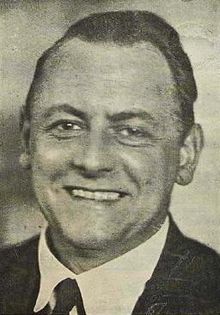Merz (art style)

Merz (art style) is a synonym for the more common expression and term Dada,[1] and traces back to Kurt Schwitters.[2]
Origin
The made-up word Merz, however, traces back to Kurt Schwitters, who planned a Dada section in Hanover. But not being invited to the First International Dada Fair in Berlin in 1920, Schwitters was on the look-out for a totally unique hat fitting only a single head"— his own.[3][4]
The very moment
He found Merz by chance when creating a collage with the German word Kommerz (commerce). The result: a nonsensical‚ dadaistic’ word. Merz became Schwitters 's very synonym for his own way of Dada.[5]
The very reception
Kurt Schwitters, father of installation art and a pioneer in fusing collage and abstraction—those two most transformative innovations of the 20th century art— influenced Robert Rauschenberg, Jasper Johns, the Fluxus movement and Joseph Beuys, too.[6]
See also
References
- ^ Cf. Richard Huelsenbeck (Ed.): Dada Almanach. New York, Something Else Press, 1966 (reprint of the 1920-edition).
- ^ Cf. Ernst Nündel: Kurt Schwitters in Selbstzeugnissen und Bilddokumenten, Rowohlts Monograph 296, Reinbek bei Hamburg 1981. ISBN 3499502968
- ^ Ernst Nündel: Kurt Schwitters in Selbstzeugnissen und Bilddokumenten, Rowohlts Monographien 296, Reinbek bei Hamburg 1981, p. 19 f. ISBN 3499502968
- ^ (Original German quote translated by Arguseyed2200).
- ^ Cf. Kurt Schwitters, 1887-1948: Urwerk, Edited by Robert Galitz/Kurt Kreiler/Klaus Gabbert. Frankfurt am Main/Berlin 1986. ISBN 3-549-06667-8. New Edition: Zweitausendeins, Frankfurt am Main, 2007. ISBN 9783861506744
- ^ Cf. Kurt Schwitters — Space, Image, Exile by Megan R. Luke. 352 p., 22 color plates, 98 halftones. University of Chicago, 2014.
